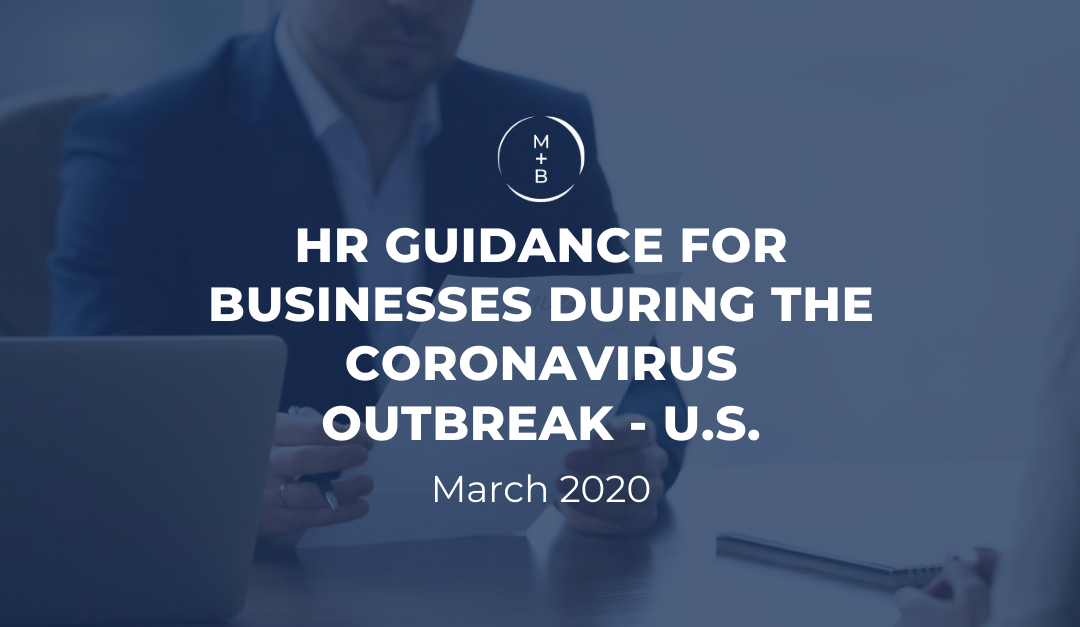Employee Safety + Wellbeing
Step-Up Workplace Safety + Cleanliness Measures
- Employers are required, by law, to provide a safe workplace for employees. Businesses need to take additional preventive measures to promote a safe, and clean environment.
- Emphasize the importance of hygiene and etiquette.
- Post informational documents throughout the workspace. Ensure employees are aware of how the virus is transmitted and what the typical symptoms look like.
- Encourage employees to cover their noses and mouths with a tissue when coughing or sneezing.
- Provide extra tissue and hand sanitizer in the workplace. Place in multiple locations to promote use.
- Instruct employees to clean hands often, with an alcohol-based sanitizer (60-95% alcohol), or to wash hands for > 20 seconds.
- Regularly clean surfaces in the workplace, including kitchens, workstations, and doorknobs.
- Provide disposable wipes, such as Lysol, so that employees can maintain a clean workspace.
Identify + Encourage Remote Work Options
- Consider remote work for all employees and establish a flexible approach, while ensuring business objectives are met and performance maintained (A Guide to Managing Your Remote Workers). Remote working should be encouraged when it is possible.
- Provide employees with the proper tools and training for remote working and virtual meetings (4 Things to Consider When Encouraging Working from Home).
- If remote work is not possible, consider staggered shifts (Live Examples from Wall Street) to limit the number of employees onsite at a given time. Increase the physical distance between employees.
-
Implement restrictions on meetings and travel. Employees should be discouraged or prohibited from meeting in-person unless required.
-
Travel should only be permitted for special cases, and only when required.
Provide Guidance on Work from Home + Leave/Pay Policies
- Ensure sick leave and absenteeism policies are flexible and adhere to public health and government guidance. Policies should be readily available and clearly communicated to employees.
- Families First Coronavirus Response Act: Employee Paid Leave Rights
- Employees exhibiting any symptoms of illness should stay home until symptoms subside.
- Do not require employees to provide a Doctor’s note to validate their illness. Doctors are challenged with capacity limitations and the public has been advised to avoid such requests.
- Provide flexibility to employees needing to stay home to care for sick family members or childcare needs. You may need to revisit sick leave/pay policies and adjust based on extenuating circumstances. Many employees are having to cope with caring for others or their children during school closures.
Designate a Representative to Handle Employee Q+A
- Ensure the representative is equipped with knowledge and resources to handle employee inquiries (Answers to Commonly Asked Questions).
- See the above resource for information on a variety of topics including:
- What happens if we need to furlough or temporarily lay-off staff?
- Are furloughed employees entitled to unemployment?
- What are the new guidelines for paying unemployment benefits to employees?
- What is the waiting period for employees to collect unemployment benefits?
- Stay up-to-date on Government guidance (Government Response to Coronavirus, COVID-19).
Hiring + Talent Management
Hiring, Onboarding + Training
- Given the uncertainty associated with our current climate, it may be prudent to freeze hiring until the business impact is measurable.
- Don’t lose sight of recruitment efforts for key roles.
- Put in-person onboarding on-hold + facilitate virtual training sessions.
- All training and development should be conducted virtually.
- How Other Employers are Responding to Hiring and Training
Refocus Employees
- Revisit critical employee and organizational goals and objectives. Has anything changed, or does it need to be changed considering the current climate?
- Ensure changes to goals and objectives are clearly communicated to employees.
- Promote employee’s success and effectiveness by ensuring goals and objectives are attainable given the potential limitations given the current environment (Best Practices for Managing Virtual Teams and Meetings).
- Communicate performance expectations. Ensure employees know what is expected of them.
- Ensure employees have channels to communicate with management and leadership regularly so challenges or issues can be readily addressed.
Re-Evaluate Employee Rewards and Performance Incentives
- Assess opportunities to provide non-financial rewards to maintain employee morale (Employee Engagement during the Coronavirus).
- Revisit and revise targets and performance criteria based on business current and near-term business impacts.
- Revise employee performance incentives once conditions begin to normalize.
Business Continuity + Communications
Plan for Business Impact + Assess Outcomes
- Evaluate the best and worst-case scenarios and assess the impact on human capital (Harvard Business Review – Lead Your Business Through the Coronavirus Crisis).
- Keep up to date on business and employee support provided by the government (Congress Approves Economic Relief Plan for Individuals and Businesses).
- Prepare for an increased number of employee absences — plan to monitor and manage absenteeism.
- Implement plans to manage and continue essential business functions based on anticipated absenteeism.
- Cross-train employees to perform essential functions to ensure the business remains operational if key employees are unable to work.
- Assess essential functions and evaluate the community’s dependency on your product or service. Be prepared to adapt business practices to maintain critical operations, so the community remains supported.
- Evaluate ways to retain employees without having to initiate layoffs. Consider 4-day work weeks, the work-sharing (Employment Development Department Work Sharing Program – CA), flexible unpaid time off, etc.
- Keep customers informed of business impacts, policies, and expectations.
Review and Share Information Regularly
- Communication is key (How to Lead Through a Crisis).
- Ensure uniformity in company communications.
- Communicate the plan with employees and involve them in the review. Assess for any gaps.
- If any employee is confirmed to have COVID-19 (OSHA – COVID-19), the employee should inform the employer and company communications should be actioned immediately. Employees exposed to this individual should be sent home immediately and required to work from home for 2 weeks (What Employees Should Do If Sick).


